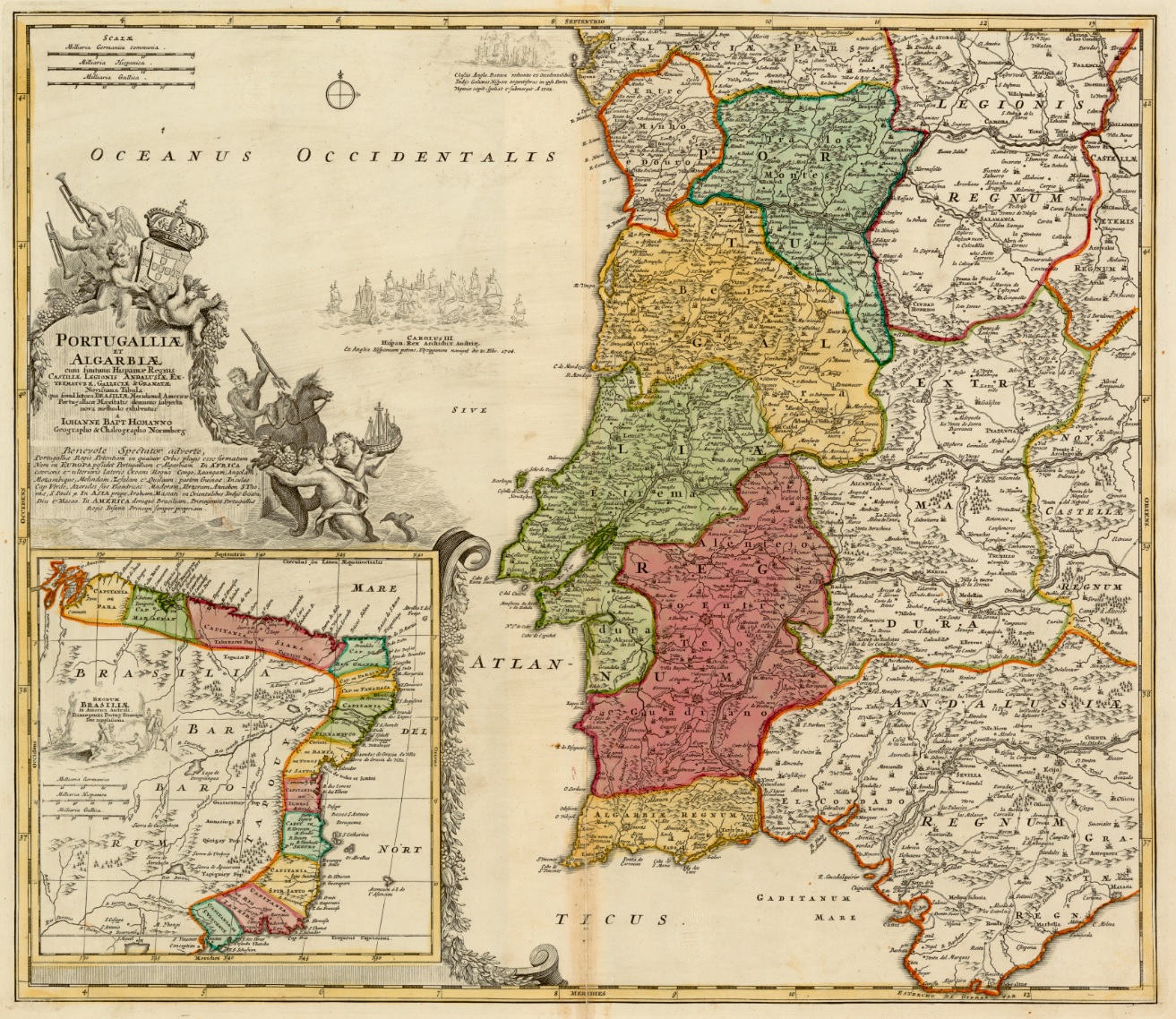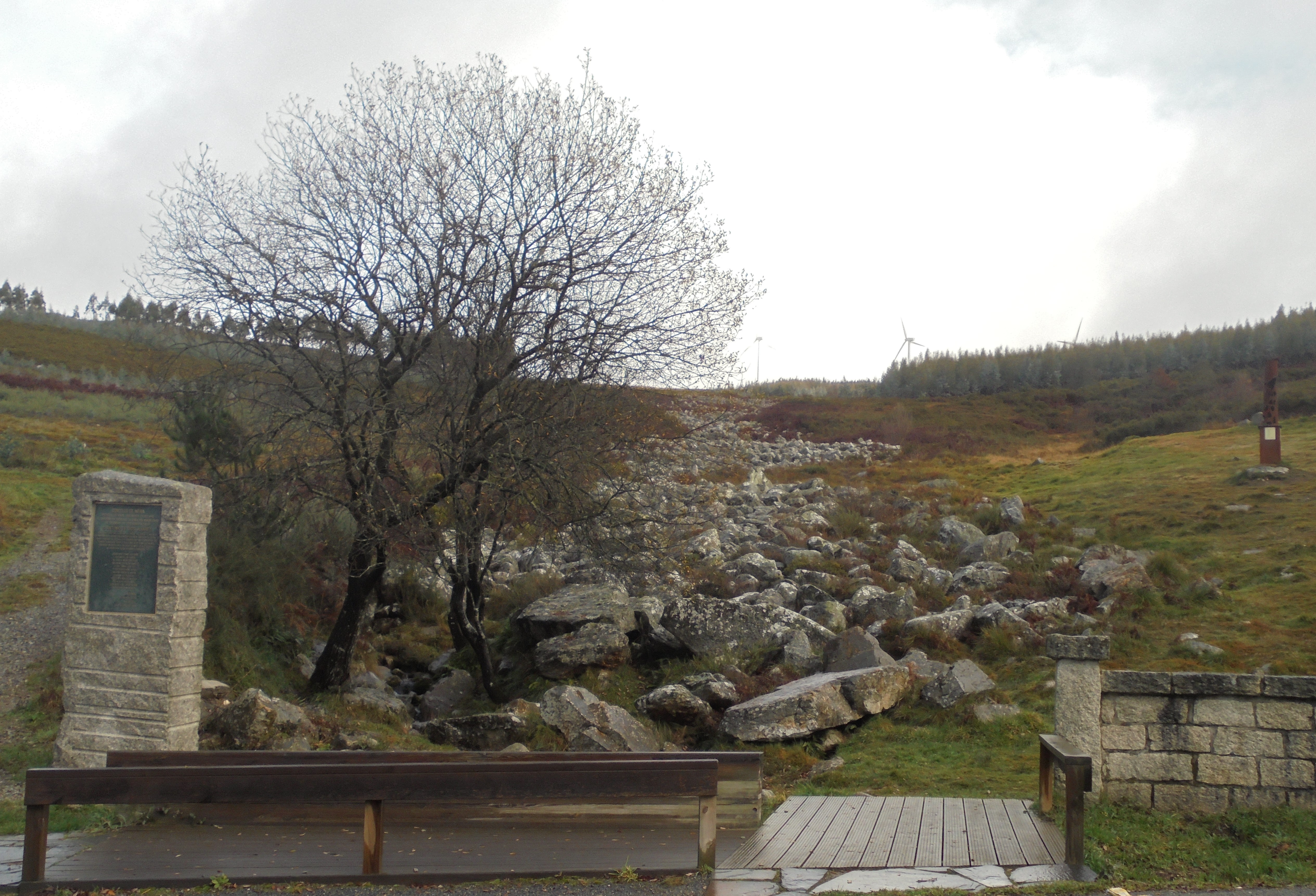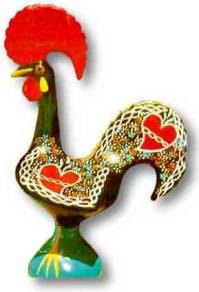|
Minho (province)
Minho () was a former province in Portugal, established in 1936 and dissolved in 1976. It consisted of 23 municipalities, with its capital in the city of Braga. Today, the area would include the districts of Braga and Viana do Castelo. Minho has substantial Celtic influences and shares many cultural traits with neighbouring Galicia in Northwestern Spain. The region was part of the Roman Province and early Germanic medieval Kingdom of Gallaecia. Historical remains of Celtic Minho include Briteiros Iron Age Hillfort, the largest Gallaecian native stronghold in the Entre Douro e Minho region, in North Portugal. The University of Minho, founded in 1973, takes its name from the former province. Minho is famous as being the origin of the soup caldo verde and Vinho Verde, a wine particular to the region. Historic cities * Braga (Bracara Augusta) * Guimarães (old Vimaranes). * Viana do Castelo, formerly Viana do Lima. * Barcelos * Fafe See also * Minho River * Gallaecia * ... [...More Info...] [...Related Items...] OR: [Wikipedia] [Google] [Baidu] |
Caldo Verde
''Caldo verde'' (, Portuguese for "green broth") is a popular soup in Portuguese cuisine. The basic traditional ingredients for ''caldo verde'' are finely shredded Portuguese cabbage or ''couve-galega'' (essentially a type of collard green), (or alternatively other leafy greens such as kale or mustard greens), potatoes, olive oil, black pepper and salt, mainly flavoured with onion and garlic (some regional recipes favour slight variations, like turnip greens or added meat, such as ham hock, making it similar to Italo-American wedding soup). Traditionally the soup is accompanied by slices of paio, ''chouriço'' or ''linguiça'' (boiled whole with the potatoes, then sliced and added to the finished soup when serving) and with Portuguese ''broa'' corn-bread or rye-bread for dipping. In Portugal, the popular soup ''caldo verde'' is typically consumed during Portuguese celebrations, such as weddings, birthdays and popular celebrations. It is sometimes consumed before a main cour ... [...More Info...] [...Related Items...] OR: [Wikipedia] [Google] [Baidu] |
States And Territories Established In 1936
State may refer to: Arts, entertainment, and media Literature * ''State Magazine'', a monthly magazine published by the U.S. Department of State * ''The State'' (newspaper), a daily newspaper in Columbia, South Carolina, United States * ''Our State'', a monthly magazine published in North Carolina and formerly called ''The State'' * The State (Larry Niven), a fictional future government in three novels by Larry Niven Music Groups and labels * States Records, an American record label * The State (band), Australian band previously known as the Cutters Albums * ''State'' (album), a 2013 album by Todd Rundgren * ''States'' (album), a 2013 album by the Paper Kites * ''States'', a 1991 album by Klinik * ''The State'' (album), a 1999 album by Nickelback Television * ''The State'' (American TV series), 1993 * ''The State'' (British TV series), 2017 Other * The State (comedy troupe), an American comedy troupe Law and politics * State (polity), a centralized political organization ... [...More Info...] [...Related Items...] OR: [Wikipedia] [Google] [Baidu] |
States And Territories Disestablished In 1976
State may refer to: Arts, entertainment, and media Literature * ''State Magazine'', a monthly magazine published by the U.S. Department of State * The State (newspaper), ''The State'' (newspaper), a daily newspaper in Columbia, South Carolina, United States * ''Our State'', a monthly magazine published in North Carolina and formerly called ''The State'' * The State (Larry Niven), a fictional future government in three novels by Larry Niven Music Groups and labels * States Records, an American record label * The State (band), Australian band previously known as the Cutters Albums * State (album), ''State'' (album), a 2013 album by Todd Rundgren * States (album), ''States'' (album), a 2013 album by the Paper Kites * ''States'', a 1991 album by Klinik * The State (album), ''The State'' (album), a 1999 album by Nickelback Television * The State (American TV series), ''The State'' (American TV series), 1993 * The State (British TV series), ''The State'' (British TV series), 2017 Oth ... [...More Info...] [...Related Items...] OR: [Wikipedia] [Google] [Baidu] |
Wine Regions Of Portugal
Portuguese wine regions are grouped into three levels of classification. At the top are the '' Denominação de Origem Controlada'' (or DOCs) which are Quality Wines Produced in Specified Regions (QWpsr) under the European Union wine regulations and thus correspond roughly to the French ''Appellation d'origine contrôlée'' (AOC) and Spanish '' Denominación de Origen'' (DO) classifications. The second group consist of '' Indicação de Proveniência Regulamentada'' (IPRs), and are also QWpsr. IPRs are used for DOC candidates "in training", and this level roughly corresponds to the French ''Vin Délimité de Qualité Superieure'' (VDQS) system. The final group are the Vinho Regional (VRs), which are table wines with a geographical indication under EU regulations. VRs each cover a larger area and are similar to the French ''Vin de pays'' at regional/departmental level.T. Stevenson ''"The Sotheby's Wine Encyclopedia"'' pg 329-333 Dorling Kindersley 2005 The early 2000s has seen m ... [...More Info...] [...Related Items...] OR: [Wikipedia] [Google] [Baidu] |
Provinces Of Portugal (1936–1976)
The term "provinces" ( pt, províncias) has been used throughout history to identify regions of continental Portugal. Current legal subdivisions of Portugal do not coincide with the provinces, but several provinces, in their 19th- and 20th-century versions, still correspond to culturally relevant, strongly self-identifying categories. They include: *Alentejo *Algarve * Beira *Douro Litoral * Estremadura * Minho *Ribatejo * Trás-os-Montes The islands of Azores and Madeira were never called "provinces". History The first provinces, instituted during the Roman occupation of the Iberian peninsula, divided the peninsula into three areas: Tarraconensis, Lusitania and Baetica, established by Roman Emperor Augustus between 27–13 B.C. Emperor Diocletian reordered these territories in the third century, dividing Tarraconesis into three separate territories: Tarraconensis, Carthaginensis and Gallaecia. At that time Tarraconesis included northern Portugal, Gallaecia and Asturias.José ... [...More Info...] [...Related Items...] OR: [Wikipedia] [Google] [Baidu] |
Peneda-Gerês National Park
The Peneda-Gerês National Park ( pt, Parque Nacional da Peneda-Gerês, ), also known simply as Gerês, is a national park located in northern Portugal. Created in May 1971, it is the oldest protected area and the only national park in Portugal. It covers an area of , occupying the Districts of Viana do Castelo, Braga, and Vila Real and bordering the Spanish Baixa Limia – Serra do Xurés natural park to the north, with which forms the UNESCO biosphere reserve of Gerês-Xurés. Peneda-Gerês was given its name by its two main granite massifs, the Serra da Peneda and the Serra do Gerês which, with the Serra Amarela and the Serra do Soajo, constitute the park's highest peaks. On the other hand, the precipitous valleys, crossed by high flowing streams, host lush temperate broadleaf and mixed forests of oak and pine, being one of the last strongholds of the typical Atlantic European flora of Portugal, contrasting with an evolving Mediterranean biome. The park is also home to arou ... [...More Info...] [...Related Items...] OR: [Wikipedia] [Google] [Baidu] |
Ave Subregion
The Intermunicipal communities of Portugal, Comunidade Intermunicipal do Ave () is an administrative division in Portugal. It was created in 2009. It takes its name from the Ave River. The seat of the intermunicipal community is Guimarães. Ave comprises parts of the former districts of Braga District, Braga and Vila Real District, Vila Real. The population in 2011 was 425,411, in an area of 1,451.31 km². Ave is also a NUTS3 subregion of Norte Region, Portugal, Norte Region. Since January 2015, the NUTS 3 subregion covers the same area as the intermunicipal community. Instituto Nacional de Estatística (Portugal), In ... [...More Info...] [...Related Items...] OR: [Wikipedia] [Google] [Baidu] |
Minho River
The Minho ( , ) or Miño ( , , ; cel-x-proto, Miniu) is the longest river in Galicia, sharing the border with Portugal, with a length of . By discharge, it is the fourth river of the Iberian peninsula, after the Douro, Ebro, and Tagus. The Minho waters vineyards and farmland, is used to produce hydroelectric power, and also delineates a section of the Spanish–Portuguese border. In ancient English maps, it appears as Minno. The source of the Minho lies north of Lugo in Galicia, in a place called ''Pedregal de Irimia''. After about , the river passes just south of the walls of this old Roman city, discharging in average 42 m3/s, and flows south through canyons until the valley widens north of Ourense. The river has been harnessed in reservoirs from Portomarín to Frieira. Along its length, it has the following reservoirs: Belesar with , Peares with , Velle with , Castrelo with and Frieira with . About north of Ourense at Os Peares, the Minho, with a discharge of 102 m ... [...More Info...] [...Related Items...] OR: [Wikipedia] [Google] [Baidu] |
Fafe Municipality
Fafe () is a municipality in the northern Portuguese district of Braga. The population in 2021 was 48,502, in an area of approximately (. The city itself had a population of 14,144 in 2001. The present mayor is Antero Barbosa, elected by the Socialist Party. The municipal holiday is May 16. History In the 10th century King Ordoño III of León donated the Vila de Moraria (Moreira de Rei) and Monte Longo to the monastery of Guimarães, founded by the Countess Mumadona. The territory was effect the Diocese of Braga in the 12th century, and was one of the largest of the seven dioceses, with approximately 950 to 1000 parishes divided into 38 group. During the 1220 ''Inquirições'' (''Inquiries''), the territory of Monte Longo was first identified. This location would have an effect; in 1258, the municipality was designated as the lands and ''julgado'' (''judicial territory'') of Monte Longo. By 1320, Fafe was part of the Diocese of Braga and the Terra de Entre Ave e Vizela, also know ... [...More Info...] [...Related Items...] OR: [Wikipedia] [Google] [Baidu] |
Barcelos, Portugal
Barcelos () is a city and a municipality in Braga District in the Minho Province, in the north of Portugal. The population in 2011 was 120,391, in an area of 378.90 km2. With 60 parishes, it is the municipality with the highest number of parishes in the country. It is one of the growing municipalities in the country, and is well known by its textile and adobe industries, as well as its horseback riding events and "figurado" style of pottery, which are comical figurines with accentuated features of farmers, folk musicians, and nativity scene characters. Barcelos is part of the UNESCO Creative Cities Network as a Crafts and Folk Art City. History Originally a Roman settlement, it expanded and became the seat of the First Duke of Bragança in the 15th century. The palace of the Dukes of Bragança was destroyed by an earthquake in 1755 and is now an open-air museum. The town is on the Portuguese Way, a Christian pilgrimage route connecting the Camino de Santiago. Constru ... [...More Info...] [...Related Items...] OR: [Wikipedia] [Google] [Baidu] |
Viana Do Castelo, Portugal
Viana do Castelo () is a municipality and seat of the district of Viana do Castelo in the Norte Region of Portugal. The population in 2011 was 88,725, in an area of 319.02 km². The urbanized area of the municipality, comprising the city, has a population of approximately 36,148 inhabitants, although the extended densely populated region reaches surrounding municipalities like Caminha and Ponte de Lima with a population above 150,000 inhabitants. It is located on the Portuguese Way path, an alternative path of the Camino de Santiago, and at the mouth of the Lima river. History Human settlement in the region of Viana began during the Mesolithic era, from discoveries and archaeological excavations. Even around the Roman occupation the area was settled along the Mount of Santa Luzia. The settlement of ''Viana da Foz do Lima'', which it was called when King Afonso III of Portugal issued a foral (''charter'') on 18 July 1258, was a formalization of the 1253 ''Viana'' that the ... [...More Info...] [...Related Items...] OR: [Wikipedia] [Google] [Baidu] |






